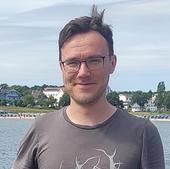The unique status of South Sámi SAuxOV among Uralic and the languages of the world
Andreas Pregla (University of Potsdam)
21.10.2024, 14:15–15:45
Geschwister-Scholl-Platz 1 (Hauptgebäude), M 105
Zoom:
https://lmu-munich.zoom-x.de/j/93938720682?pwd=ZnRCV1JnL2w4SVdvMHlCTEtWL2NjZz09
Meeting ID: 939 3872 0682
Passcode: 284661

South Sámi is an OV language, and it is an SAuxOV language in particular (Magga & Magga 2012, Ylikoski 2022, Kowalik 2023). Additionally, there is an alternation in the position of the finite verb between SAuxOV and SOV in matrix clauses, as shown in (1). This alternation is not attested in the non-Sámi branches of the Uralic family (Vilkuna 1998). South Sámi also differs from its closest relatives, North Sámi and Finnish, which are VO languages with OV orders as marked options. Furthermore, the pairing of Aux-V order with OV order is rare globally (Dryer, 2013, 277).

The first aim of this talk is to show how rare the South Sámi word order pattern is by contrasting it with other SAuxOV languages. This leads to a typology of SAuxOV languages where South Sámi has a unique position.
The second aim is to show that the the SOV–SAuxOV alternation fills a predicted gap in a common typology of verb movement: South Sámi is an OV language where only Aux moves obligatorily, whereas this has only been assumed for VO languages before. In order to consolidate this point, I provide a clause structural analysis of South Sámi.
Finally, I will show that South Sámi is strongly defined by the elusive "EPP property": the generative concept requiring a language to host a special structural position for subjects. I claim that this structural position leads to the relative word-order rigidity of South Sámi compared to other Uralic languages. In sum, South Sámi will come out as a unique language both globally and among the Uralic languages.

